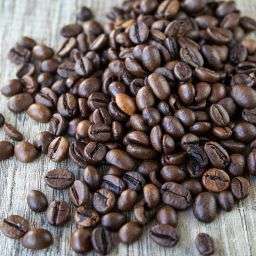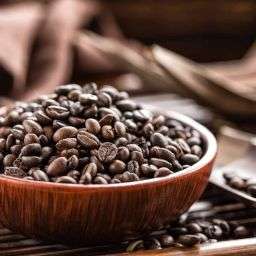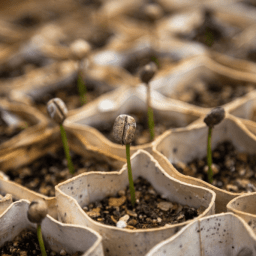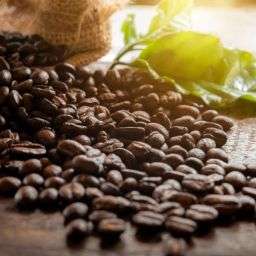
The art of coffee preparation begins with the grinding process, a crucial step that significantly influences the final taste of your brew. Freshly grinding coffee beans before brewing is essential for capturing the full spectrum of flavors and aromas that coffee has to offer. The method of grinding varies widely, from traditional hand grinders to electric burr and blade grinders.
Each method impacts the consistency of the grind, which in turn affects the extraction rate and the flavor profile of the coffee. The choice of grinding method can make the difference between a mediocre cup of coffee and an exceptional one.
Can Coffee Beans Be Grind in a Food Processor?
A common question among coffee enthusiasts is whether a food processor can serve as a suitable alternative to a coffee grinder. The short answer is yes, but with some reservations. Food processors are designed for a broad range of kitchen tasks, including grinding, but they may not offer the same level of precision as a dedicated coffee grinder.
The blades of a food processor are capable of breaking down coffee beans into smaller particles, but achieving a consistent grind size may be challenging. Despite this, in a pinch, a food processor can be used to grind beans for brewing methods that are forgiving of grind size inconsistencies, such as French press or cold brew.
Selecting the Right Coffee Beans
The selection of coffee beans is foundational to the quality of your brew. Freshness is paramount; freshly roasted beans should be used within a month of their roast date to ensure peak flavor. The grind size required for your brewing method also influences bean selection, as different methods extract flavor and aromas at different rates.
Finally, the flavor profile of the beans—ranging from nutty and chocolatey to fruity and floral—should match your personal taste preferences. Experimentation with various beans can lead to discovering new flavors and refining your coffee palate.
Preparing Your Food Processor
Before grinding coffee beans in a food processor, a few preparatory steps are necessary to ensure the best possible outcome. First, ensure that the food processor is clean and free from any residues that might affect the taste of the coffee. This includes washing the bowl, lid, and blades with warm soapy water and drying them thoroughly.
Check the blades for sharpness, as dull blades may not grind effectively. If your processor has been used to process strong-flavored foods, consider running it with a mixture of baking soda and water to eliminate any lingering odors. Once cleaned and assembled, the food processor should be placed on a stable surface to ensure safety during the grinding process.
Step-by-Step Guide to Grinding
To grind coffee beans in a food processor, start by selecting the right amount of beans for your brew. Measure the beans according to the coffee-to-water ratio recommended for your brewing method. Place the measured beans into the food processor. It’s best to grind no more than a half cup of beans at a time to ensure an even grind and prevent overloading the processor.
Pulse the food processor in short, sharp bursts, checking the consistency of the grind after each pulse. This method helps to avoid overheating the beans, which can affect the flavor of your coffee. Aim for a uniform grind size that matches your brewing method. Once the desired consistency is achieved, transfer the ground coffee to your brewing device or an airtight container if not using immediately.
Adjusting Grind Size for Brewing Methods
The grind size significantly impacts the extraction rate and overall taste of your coffee. A coarse grind is ideal for French press and cold brew methods, which require longer brewing times. Medium grinds work well for drip coffee makers and pour-over methods, where water passes through the grounds more quickly. Fine grinds are best suited for espresso machines, which force water through the grounds under high pressure. Experimenting with grind sizes can help you fine-tune the flavor to your preference.
Advanced Grinding Tips
Achieving a consistent grind is crucial for a balanced and flavorful cup of coffee. To ensure consistency, shake or tap the food processor between pulses to redistribute the beans. If your processor allows, adjust the pulsing speed to better control the grind size. Avoid overheating by grinding in small batches and allowing the processor to cool between uses. Regularly clean your food processor to prevent oil buildup from the beans, which can affect the taste of your coffee.
Alternative Grinding Methods
If you don’t have a food processor or are seeking a different grind texture, consider these alternatives:
- Blender: Similar to a food processor, use short pulses to avoid overheating. Blenders may struggle with achieving a fine grind but are suitable for coarser grinds.
- Hammer or Rolling Pin: Place beans in a zip-lock bag and gently crush them. This method is useful for achieving a coarse grind.
- Knife: Use the flat side of a large knife to crush beans on a cutting board for a medium-fine grind.
- Spice Grinder: Ideal for a fine grind, spice grinders offer more consistency and are excellent for small quantities.
- Garlic Press: For a quick, coarse grind, a garlic press can work in small batches.
- Mortar and Pestle: Best for achieving the finest grind, this method allows for the most control over the texture but requires more effort.
Each alternative method has its unique benefits and drawbacks. The choice depends on your available tools, the desired grind size, and the amount of effort you’re willing to invest. Experimenting with different methods can also enhance your understanding of how grind size influences the brewing process and the final taste of your coffee.
FAQs
How Does Grind Size Impact Flavor?
The size of your coffee grind has a significant impact on flavor. A finer grind increases the surface area in contact with water, enhancing extraction but risking over-extraction, which can lead to bitterness. Conversely, a coarser grind slows down extraction, ideal for brewing methods like French press, which require longer steep times. Optimal grind size varies with brewing technique to balance extraction, ensuring richness without bitterness.
How to Clean a Food Processor After Grinding Coffee?
After grinding coffee, disassemble your food processor and wash the removable parts with warm soapy water. For stubborn coffee oils or odors, a baking soda paste or vinegar solution can be effective. Ensure all parts are dry before reassembling. Running a piece of bread or rice can help absorb oils and clean hard-to-reach areas.
Tips for Storing Ground Coffee
To preserve the freshness of ground coffee, store it in an airtight container away from light, heat, and moisture. Glass or ceramic containers with rubber seals are ideal. Avoid plastic, which can impart flavors to the coffee. For best taste, use ground coffee within a week or two of grinding.
Conclusion
Grinding coffee beans in a food processor is a viable option when a dedicated coffee grinder is not available, offering a convenient and versatile solution. While this method may not achieve the grind consistency of a coffee grinder, it allows for fresh grinding, enhancing flavor and aroma.
For best results, pay close attention to the grind size, adjusting it according to your brewing method. Regular maintenance of your food processor ensures clean, flavorful coffee. Ultimately, experimenting with grinding and brewing techniques can enrich your coffee experience, making each cup a unique exploration of flavors.









